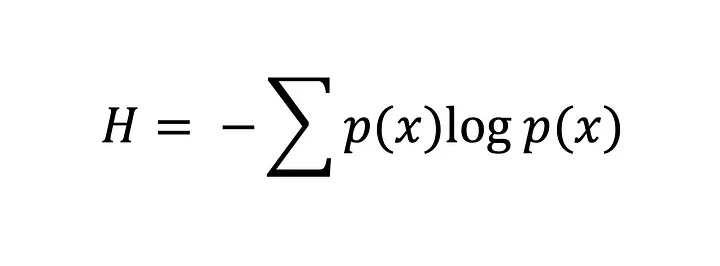What's 'static mean in Rust
In Rust, 'static is a special lifetime that signifies that the data lives for the entire duration of the program. Here are some key points about 'static:
Key Characteristics
-
Longest Lifetime: The
'staticlifetime is the longest possible lifetime. Any data with a'staticlifetime can be accessed anywhere in the program without worrying about it being dropped or going out of scope. -
String Literals: String literals have a
'staticlifetime because they are hardcoded into the program and exist for its entire runtime. For example:1
let s: &'static str = "Hello, world!";
-
Heap Allocated Data: Data allocated on the heap can also have a
'staticlifetime if it’s managed in a way that ensures it remains accessible for as long as needed. For example, usingBoxorRcwithArccan create'staticreferences:1
2let s: Box<str> = Box::from("Hello, world!"); // The Box itself is not &'static
let r: &'static str = Box::leak(s); // Now it's &'static -
Function Signatures: When a function or struct is defined with
'static, it means it can hold or return data that will last for the entire duration of the program. For example:1
2
3fn get_static_str() -> &'static str {
"Hello, world!"
} -
Static Variables: Variables declared with the
statickeyword also have a'staticlifetime. They are stored in a fixed memory location and exist for the entire lifetime of the program:1
static GREETING: &str = "Hello, world!";
Use Cases
-
Thread Safety: When working with threads, you often need to ensure that data can be safely accessed from multiple threads. Data with a
'staticlifetime can be sent across threads without fear of it being dropped unexpectedly. -
Long-Lived Resources: If you have resources that should be available throughout your application (like configuration settings), using data with a
'staticlifetime can be beneficial.
Summary
The 'static lifetime in Rust indicates that data is valid for the entire duration of the program, which is useful for ensuring safety in memory management, particularly when dealing with multithreading or long-lived resources.
Lifetimes in Rust are a crucial concept for managing how long references to data are valid. They help ensure memory safety without needing a garbage collector. Here’s an overview of lifetimes, their purpose, and how to use them effectively:
Key Concepts
-
Purpose of Lifetimes:
- Lifetimes are used to track how long references are valid. This prevents dangling references, where a reference points to data that has been freed or gone out of scope.
- They help the Rust compiler enforce rules about how references can be used in functions and structures.
-
Basic Syntax:
- A lifetime is denoted by an apostrophe followed by a name (e.g.,
'a,'b). - When you specify a lifetime for a reference, it tells the compiler how long that reference is valid in relation to other references.
- A lifetime is denoted by an apostrophe followed by a name (e.g.,
Lifetime Annotations
Lifetime annotations are needed when:
- You have multiple references in a function, and the compiler needs to know how the lifetimes of those references relate to each other.
Example of Lifetime Annotations
1 | fn longest<'a>(s1: &'a str, s2: &'a str) -> &'a str { |
In this example:
<'a>specifies that boths1ands2are references with the same lifetime'a.- The return type
-> &'a strindicates that the returned reference will also have the same lifetime.
Lifetime Elision
Rust has some rules to make using lifetimes easier through lifetime elision. This means that in certain situations, you don’t need to specify lifetimes explicitly:
- If there is exactly one input lifetime, it is inferred as the lifetime of the output.
- If there are two input lifetimes, but one of them is
&selfor&mut self, the other is inferred as the lifetime of the output.
Example with elision:
1 | fn first_word(s: &str) -> &str { |
Lifetime Boundaries
-
Structs with Lifetimes: You can define structs that hold references, and you must annotate their lifetimes.
1
2
3
4struct Book<'a> {
title: &'a str,
author: &'a str,
} -
Lifetime Subtyping: A reference with a longer lifetime can be assigned to a reference with a shorter lifetime, but not vice versa. This is important in function parameters.
Common Lifetime Scenarios
-
Dangling References: Rust will not allow you to create dangling references. The compiler checks that any reference must always point to valid data.
1
2
3
4fn bad_reference() -> &str {
let s = String::from("Hello");
&s // Error: `s` is dropped here, making the reference invalid
} -
Multiple References: When a function takes multiple references, the lifetimes help the compiler understand the relationship between them.
1
2
3fn compare<'a>(a: &'a str, b: &'a str) -> bool {
a == b
}
Lifetime Bounds
You can use lifetime bounds to specify that certain lifetimes must outlive others:
1 | fn example<'a, T>(x: &'a T) -> &'a T { |
In this function, the lifetime of the reference x is tied to the lifetime 'a.
Conclusion
Lifetimes in Rust are an essential feature for ensuring safe memory management without a garbage collector. They enable the compiler to enforce rules about how references can be used, helping to prevent common bugs like dangling references and memory leaks. Understanding lifetimes is crucial for writing safe and efficient Rust code.

